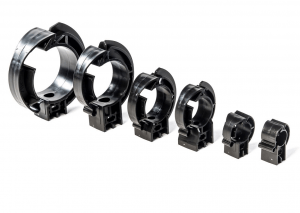Proper compressed air line installation is critical for maximizing the efficiency of your system. Exercising the best practices for installation will help you get the most out of your compressed air line system for many future jobs.
Installing your compressed air line with the best types of pipes can extend the longevity of your system. Deburring and securing the placement of your compressed air line can also extend the life your system.
Follow the compressed air line installation tips below to put your compressed air system in the best position for operations moving forward.
Choosing the Best Pipe Material
Choosing the best type of pipes to use is critical for both the quality and safety of your 
Instead, you should use aluminum compressed air pipes that are more durable and require far less maintenance than their PVC counterparts. While the initial cost is higher, aluminum pipes have more versatility when it comes to modifications and they are much more compatible when it comes to using fittings.
Cutting and Resizing Pipes
You may need to shorten the size of your pipes when you begin fitting piping together 
Instead use a pipe cutter, also called a tube cutter or a cut off saw, to precisely cut through your line of pipe. Pipe cutters and cut off saws are not only more accurate, but faster and more efficient than alternative cutting tools.
Deburring Pipe Ends and Holes for Fittings
Although pipe cutters take care of most of the work, you will still need to deburr the ends 
When connecting your pipes, you will also want to deburr any drilled holes. A pen style deburrer can be a useful tool for precise deburring of holes in your pipe. While it will take longer, this extra step will prevent any damage to your O-rings when you attach quick drops to your line of piping.
Secure Pipes and Tighten Fittings
Avoid using any tool with grooved metal jaws when tightening fittings in your system. 
Once your pipes are in place, you will want to make sure that they are stable for the long haul. We recommend installing 2 or 3 pipe clips for every 20-foot section of piping in your compressed air line with additional clips around heavier fittings such as isolation valves. This will hold your lines of pipe securely in place
Testing Your New Compressed Air Line
With your compressed air line installation completed, you can now prepare to test your system. Run through your compressed air line one last time to look for any improperly installed piping. Then, review the specifications and limits of your system before your initial test.
We recommend exercising all of the necessary safety precautions during testing and any future time that the system is used. Wear a pair of safety glasses for added protection.
During your first test, you should always set the system to a significantly lower pressure level from the onset. Never send the maximum pressure through your compressed air line, or you could end up breaking the system. It is best practice to gradually increase the pressure up to the maximum threshold needed for the everyday job. Always consult the manufacturer’s initial test instructions before pressurization of any compressed air system.
Aluminum Compressed Air Pipe Systems
Aluminum air pipes have revolutionized compressed air systems, offering unparalleled durability, efficiency, and performance. These systems, known for their lightweight construction and corrosion resistance, are a superior choice for shop air lines and industrial applications. Aluminum compressed air pipe systems provide a reliable and cost-effective solution for creating efficient air distribution networks. Whether it’s in manufacturing facilities or automotive workshops, aluminum air lines ensure a smooth and uninterrupted flow of compressed air. Their modular design allows for easy installation and adaptability, accommodating evolving needs within a workspace.
When designing a compressed air piping system, aluminum emerges as a standout material due to its non-corrosive nature, preventing rust and contamination. Precision-engineered fittings specifically designed for aluminum compressed air pipes guarantee leak-free connections, contributing to enhanced system reliability. With a focus on longevity and performance, aluminum compressed air pipe fittings offer a low-maintenance solution, reducing downtime and operational costs. The versatility of compressed air aluminum pipes allows for seamless integration into existing setups or the creation of custom-designed systems tailored to unique requirements. Aluminum compressed air pipes and fittings provide an efficient, reliable, and durable solution for compressed air distribution, making them the preferred choice for industries prioritizing performance and longevity in their air systems.

